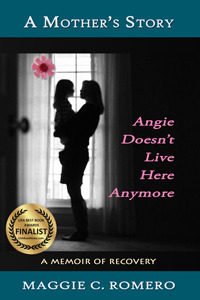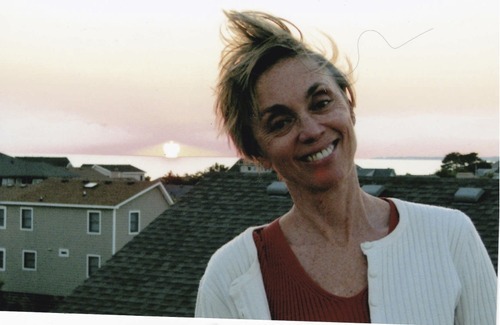“I believe we have two lives: the one we learn with—and the one we live afterwards.”
Recovery of the Spirit
I’m very pleased that my memoir has been named a Finalist in the Women’s Issues category of the 2014 USA Best Book Awards.


For many of us, writing is a journey of self-discovery, full of delights and surprises. I never set out to write a memoir. I had no plan or outline, no clear beginning and an unknown conclusion. It just became one along the way.
Seven years ago, I had just discovered that my daughter was a heroin addict. So in my grief and frustration I found relief by writing about it. And then I stopped. I moved to New Mexico where I met a writer who would become my teacher and coach. Looking over what I had started writing she encouraged me to turn it into something. So I did: I gave her a 500+ page rant, something Chris Offut would call “the delirium of the first draft!” Well, I thought I was done. I was thinking of section titles and started writing notes to myself in the margins: things like “Oh, by the way, I had a miserable childhood;” and “Hush, hush, don’t tell anyone, but I’m an addict, too.” And I realized in confronting these truths about myself that this was my story. Angie and her drug addiction was the catalyst, certainly, that got me writing. But the story began with me.
So I went back and wrote an introduction, a window into my childhood and young adulthood as Angie’s mother. I wanted you, the reader, to know me. And I felt it was important for you to know my daughter as well. She was a beautiful, gifted, full-of-promise child and young woman—before this cruel disease corrupted her.
The rest of the book started out as the roller coaster ride of drug addiction—thirteen years, from 2001 until now—all the highs and the lows, the rehabs and the relapses, the joys and the sorrows, everything that accompanies unbridled drug addiction. That was the original plotline. But I added another one along the way: that of my evolving recovery from all this heartache. These two plotlines parallel each other, and they intersect a lot in the beginning of Angie’s illness. But at some point in the story they go in separate directions.
And it’s in sharing the change and transformation in me as a result of this most tragic event in any parent’s life that this angry narrative about drug addiction takes the shape of a memoir. I weave the voice of recovery into every chapter, from beginning to end, as I reflect back on events in my life—through a different lens.
At the beginning of Pentimento, Lillian Hellman’s wonderful collection of remembrances that she wrote back in 1973, she points out how artists sometimes paint over what they had painted before. They changed their minds; they “repented.” So too in literature, she adds, “the old conception, replaced by a later choice, is a way of seeing…and then seeing again.”
Writing, for me, is self-discovery. At times I feel confused or I want answers, and when I write about it, the mud often sinks to the bottom and I can see things more clearly. It’s a clarification process. Often I start a piece, and by the time I’ve finished it, I’ve answered some questions. It’s sort of like, as Lillian Hellman said as she described the term “pentimento,” my “old conception, replaced by a later choice, is a way of seeing, and then seeing again.” “Pentimento”—a term in art where sometimes, the artist changing his mind, paints over what he had previously put on the canvas. Thus, he repented. Many times I’ve written stories that ended up nowhere I had intended. I thought I wanted to write about one thing, but ended up writing about something else. It’s a real excavation process, as we mine our depths often coming out so much richer in self-knowledge than we were in the beginning.
A Journey of Transformation
This is a memoir of my recovery from addiction and the effects of living with it. But it didn’t start out that way. I began it several years ago solely as a story about my daughter’s drug addiction. And as I got deeper into the writing of it I realized that there was much more of a story to tell, and that that story began with me in my childhood.
And so I began the excavation process, the unfolding of my life, and laid myself out before the reader in the Introduction. Angie didn’t become an addict in a vacuum. She is the latest in at least four generations of troubled souls. So I allow you, the reader, to get to know me long before my daughter was hijacked by this cruel disease. It adds another dimension to my very personal story, and allows you to consider that addiction is often a generational illness. And you will see why it is, indeed, “A Mother’s Story.”
Ironically it was my daughter Angie whose disease brought me to a place of wellness and peace in my life. All the ugliness of behavior and spirit that often goes with unbridled addiction is documented in the book, as addiction is a monster that takes few prisoners. Yet Angie was a beautiful young woman with her whole life ahead of her before addiction seduced her. Her tapestry described in the book reminds us that beauty is often born out of loss.
This is a story about my recovery in the face of all this heartbreak. How I’ve been able to accomplish this is a testimony to the power of spiritual transformation. And so, paralleling the roller coaster ride of her illness, I share with the reader throughout the book my evolving recovery and my journey toward serenity.
This journey has freed my children from the same oppression that held me hostage growing up. Many people who have suffered through the darkness of addiction are consumed by despair. But as I continue to grow and change, my loved ones are the beneficiaries. Perhaps some elements of my story will resonate with you as well.